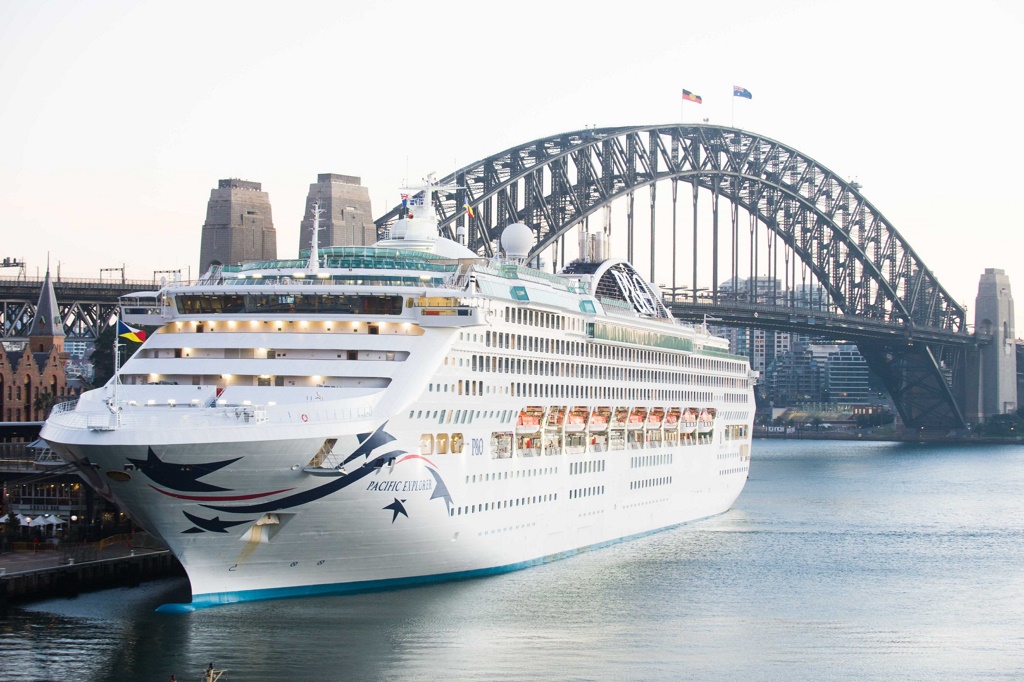Cruising down the Yangtze through China’s famous Three Gorges, Teresa Ooi is mesmerised by the mountainous scenery.
It’s a spring morning with an overcast sky when I arrive at Chongqing, in China’s Sichuan province, after a long overnight flight via Hong Kong.
I am here to board Sanctuary Yangzi Explorer for a three-night cruise down the mighty Yangtze River to Yichang in Hubei province. The Chinese call it Chang Jiang, which means long river, and the Yangtze is the world’s third-longest and Asia’s longest river.
We are anticipating lots of heart-stopping moments. The awe-inspiring landscape surrounding the Three Gorges is on our itinerary and this journey ranks in many travellers’ top-10 “must-do” lists.
The Yangtze is considered by the Chinese as the greatest source of life. The river originates from the Tibetan Plateau and surges from the west to the east, cutting through Sichuan, Chongqing, Hubei and Hunan provinces before emptying out at Shanghai.
It is hot and humid by the time I arrive at a nondescript wharf with steep steps leading down to the river ship. An elderly farmer-turned-porter hoists my case over his shoulders and deftly descends the steps. No high-tech luggage loaders here.
The ship is expecting 95 guests, mostly American, Korean, Australian and British, plus two local families with young children.
I am six hours early, but the young crew is most welcoming, showing me to suite 310 on deck 3. It is a generous-sized room with a balcony, bathroom with separate shower, queen-sized bed and wardrobe.
When I’m settled, a lunch of steamed dumplings and vegetable noodle soup is served.
Sanctuary Yangzi Explorer is a comfortable ship. Cabin sizes start from 31 square metres. The four biggest suites, ranging from 81 square metres to the top Celestial and Imperial suites at 110 square metres, are decorated in modern Chinese style.
The ship has an onboard spa specialising in foot reflexology, and tai-chi classes are conducted each morning. There’s a gym, conference room, theatre and the Explorer Bar, where most of the guests congregate and listen to the Filipino singer’s repertoire of 1970s and ’80s music.
The ship has its own chequered history. In 1995, Bill Gates chartered it for his family and close friends, including American billionaire Warren Buffet, for a four-night private cruise on the Yangtze to experience the Three Gorges. Orders of specially imported marshmallow chocolate drinks for breakfast and cans of cherry-flavoured Coke were loaded up for Gate’s intimate cruise holiday, looked after by more than 100 crew.
The ship has also hosted former US Secretary of State Henry Kissinger and Mark Cendrowski, a director best known for the US TV sitcom The Big Bang Theory.
Cruises on the Yangtze often begin or end in Chongqing. It is China’s gateway to the south-west. It is also a city of lights. When dusk falls, colourful neon lights illuminate cruise ships, pleasure craft, buildings, overhead funiculars and bridges. The harbourside resembles a scene from Blade Runner.
There is only one main dining room on Sanctuary Yangzi Explorer, the recently refurbished Dynasty Restaurant. The menu is what hotel manager Teddy Garcia describes as “East meets West’’.
This is the only ship plying the Yangtze that offers an à-la-carte menu. Over the three-night cruise, we are served a mix of Western and Chinese dishes. Starters include a choice of beef consommé, cream of mushroom soup and winter melon soup, while main courses range from duck with plum sauce, dory fish fillet in Thai sauce and fried chicken. Breakfast and lunch are buffet-style with a choice of Chinese noodles with dumplings, fried beef with capsicum, sweet and sour fish, fried rice and traditional Western scrambled or fried eggs, muesli with yoghurt, cut bananas and watermelon.
It is a trifle disappointing that despite the cruise starting in the Sichuan province, which is known for its spicy and chili-hot cuisine, there are barely any spicy dishes served on board, with the exception of kung pao chicken – a popular dish cooked with garlic and spicy sauce.The next day, we arrive at the ancient ghost city of Fengdu, which has a collection of shrines, temples and monasteries celebrating the afterlife. We take a walk through Fengdu marketplace where stall holders sell anything from pigs’ ear lobes to chicken feet. Barefoot dentists, with no proper qualifications, carry out their trade in the open streets alongside several women tailors, altering clothes on the spot for waiting customers.
We are close to the climax of our journey; one of the new wonders of our modern world, an engineering marvel shrouded in wonder and controversy – the Three Gorges dam.
At a relocation village, we visit Mr Mao, one of 1.3 million Chinese, mostly farmers, moved from the river banks to relocation villages when the dam was being constructed. That figure gives you an idea of the scale of the project.
Just after the sun rises the next day, the ship enters the first gorge. Qutang Gorge is about eight kilometres long and takes 20 minutes to navigate. Guests on board are awestruck, mesmerised by the sheer beauty of the mountainous landscape around us. It is exactly what you see in pictures of the Three Gorges.
Next, we enter Wu Gorge. It stretches 45 kilometres and is considered the most beautiful with 12 peaks, including the famous Goddess Peak.
When the ship docks at Badong, we disembark directly to a ferry, which takes us on a guided tour of the Shennong Stream. We board a sampan rowed by three elderly boatmen, former farmers from the river banks, helped by two boat trackers who jump off and pull the sampan in very shallow waters.
As we move upstream, the water is densely green, but the surrounding mountainside is magnificent. It is home to the Tujia people from the Ba tribe, who have their own language and customs.
“Can you see the coffin hanging from the mountainside? Look, quick – there’s a dragon head and a swallow’s nest at the side of the mountain – use your imagination,’’ our local guide urges us, pointing out rocky features.
At about 4pm, we enter the treacherous Xiling Gorge, which has caused many navigational mishaps due to its frightening whirlpool currents and strong rapids. The Three Gorges Dam was constructed in the middle of the Xiling Gorge, increasing the river depth from three metres to well over 100 metres in the reservoir.
That evening, our last on the ship, we dine in style with a Chinese banquet, which includes hot and sour soup, kungbao shrimp, deep-fried minced-pork ball with chestnuts, steamed dory with vermicelli, garlic vegetables, pork dumplings and Yangzhou fried rice.
Guests are also treated to a parade of waiters and waitresses all spruced up in traditional Chinese costumes, followed by an after-dinner concert at the Tang theatre on deck four. In keeping with the spirit, the concert has several contributions from guests including a guitar performance by a passenger from Queensland.
After dinner, we dash up to the top deck to watch as the ship begins to manoeuver through the Three Gorges’ locks, a process that takes more than four hours as we sleep.
The next morning, we arrive at Yichang and take a guided tour of the Three Gorges dam project – one of the largest hydro-electric power structures in the world.
Construction of the dam started in 1994 and was completed in 2008. In the process, the dam flooded 13 cities, 140 towns and 1,600 villages. It also flooded many archaeological and cultural sites.
Besides producing electricity, the dam has increased Yangtze River’s shipping capacity and reduced the potential of flooding further downstream. It generates 11 times more power than the Hoover Dam in the US.
It is certainly impressive, but there is no escaping the fact that this huge engineering feat has been achieved at a great cost to the Chinese people. Today, it remains a highly controversial issue.
THE VERDICT
Highs: Going through the dramatic Wu Gorge with its 12 peaks and arresting mountainous terrain.
Low: Lack of spicy Sichuan food. Could do with a wider choice of fresh fruit.
Best suited to: Experienced 60-something cruisers wishing to tick off their must-do list.









